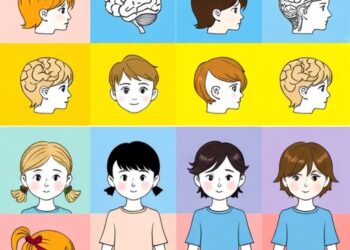If you’re trying to keep drivers from picking up their phones, make it a game, according to a new Proceedings of the National Academy of Sciences (PNAS) study led by researchers from the Perelman School of Medicine at the University of Pennsylvania. When drivers could earn points for making reductions in handheld phone use and had the chance to compete in a weekly leaderboard of others like them, researchers saw as much as a 28 percent reduction in handheld phone use while driving, a habit that stuck once the intervention—and the games—ended.
If you’re trying to keep drivers from picking up their phones, make it a game, according to a new Proceedings of the National Academy of Sciences (PNAS) study led by researchers from the Perelman School of Medicine at the University of Pennsylvania. When drivers could earn points for making reductions in handheld phone use and had the chance to compete in a weekly leaderboard of others like them, researchers saw as much as a 28 percent reduction in handheld phone use while driving, a habit that stuck once the intervention—and the games—ended.
“Distracted driving is responsible for almost 1 million crashes in the United States each year. Interventions like this could start to bring that number down,” said study lead author Jeffrey Ebert, PhD, director of applied behavioral science at the Nudge Unit, part of Penn Medicine’s Center for Health Care Transformation & Innovation.
Previous work by Ebert and this study’s senior author, M. Kit Delgado, MD, MS, the faculty director of the Nudge Unit and an associate professor of Emergency Medicine, determined that a combination of interventions including weekly feedback and monetary incentives could result in significant reductions in handheld phone usage time—up to 21 percent. But the reductions declined as time wore on and the interventions ended.
On top of that, when looking at the results of the prior study, Ebert, Delgado, and their colleagues saw that the drivers with the heaviest phone use didn’t change their behavior. Given that only the safest drivers were eligible to receive congratulatory feedback and incentives in this prior study, the researchers concluded that the heaviest phone users may have gotten discouraged when they did not meet their lofty weekly goals.
“It’s like trying to get someone who has never run before to go out and do a marathon right away,” said Delgado. “Habit change is hard.”
With this in mind, Ebert and Delgado set out to test strategies that would make it easier to build good habits and reward drivers for making step-by-step improvements.
Like the one before, this study recruited customers enrolled in Progressive Insurance®’s voluntary “usage-based insurance (UBI)” program, a policy option where customers agree to download a smartphone app to monitor driving performance—including phone use while driving—with potential for discounts for safer driving. Customers who opted in to participate in the study were randomly assigned to one of four intervention strategies or a control group. All strategies involved giving drivers a hands-free cell phone mount for their car.
The group that combined the most interventions, including the points game, a share of a prize for earning enough points, and the leaderboard with added prize money, achieved a 28 percent reduction in time engaged in handheld phone use while driving.
That rate stayed the same when researchers followed up after the game and incentives were over, as long as 65 days afterward.
Even in the group where prize money wasn’t available, a 21 percent reduction in phone time was seen. They also maintained a significant decline in phone usage after their game ended, keeping it down by 16 percent.
“This tells me that a lot of people genuinely wanted to become safer, more focused drivers, and the study helped them develop lasting, good habits around their phone use,” Ebert said. “With a few tweaks to the feedback and incentive structure that insurance companies already employ, we believe you’ll see greater improvements in driver safety—a win-win-win for insurers, their customers, and society.”
The population that this occurred in was also encouraging.
“The fact that we tested these interventions within an auto insurer’s existing program suggests that they also could be scaled up quickly, especially since these types of behavior-based auto insurance programs are also rapidly growing across the U.S. and internationally,” Delgado said.
Each year in the United States, more than 800,000 crashes resulting in 400,000 injuries and 3,000 deaths are at least partly attributable to distracted driving. Cell phone use has been tied to approximately 12 percent of all crashes in the country. Handheld phone use amid driving also increases the odds of a crash ninefold. And although 28 states have now passed laws against handheld cell phone use while driving—with Pennsylvania being the most recent—these laws are difficult to enforce.
That means there needs to be other methods to encourage drivers not to use their phones so much, and Ebert, Delgado, and their colleagues believe behavioral science interventions like these are the answer.
“We see this as a proof of concept: When you offer drivers the knowledge, tools, and feedback needed to succeed, they are willing and able to give up a risky driving behavior for little or no money,” Ebert said.
The researchers are now investigating if these findings will translate to other safe driving habits, such as seat belt wearing or driving at safe speeds.
Funding for the research was provided by the Federal Highway Administration Exploratory Advanced Research Program (693JJ31750012), the National Institutes of Health (K23HD090272001), the Abramson Family Foundation, and the Progressive Casualty Insurance Company.
Editor’s note: Some of the study co-authors not affiliated with Penn Medicine work for Progressive.
Journal
Proceedings of the National Academy of Sciences
Method of Research
Randomized controlled/clinical trial
Subject of Research
People




